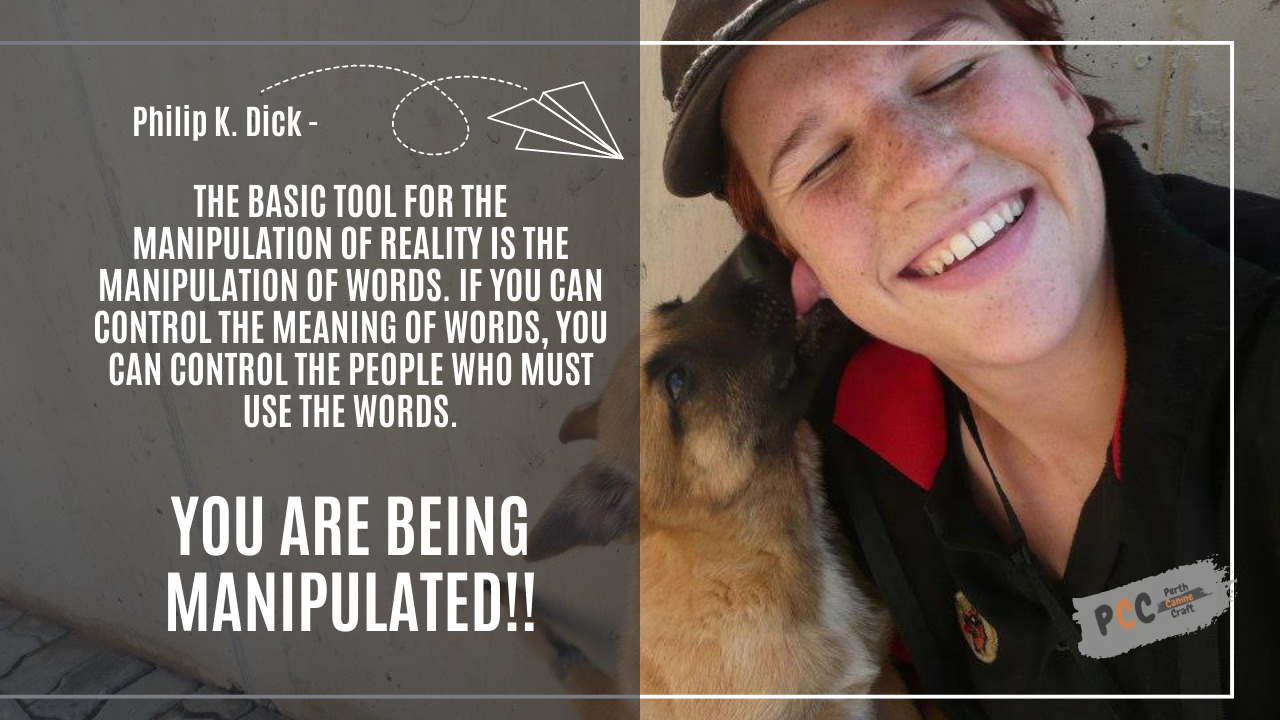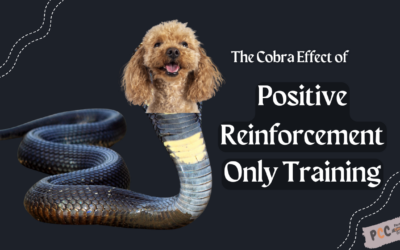As a dog trainer, I can only speak for myself, however, I would risk that most dog trainers love dogs and don’t feel that dog training is just about teaching commands. I’d wager that most dog trainers are figuring out ways to get dog owners invested in their dogs and learn to co-exist by taking into account the needs of both species and thus living together and striving for a good quality of life for both, whatever that looks like.
Am I a dog trainer or an entrepreneur?
I am both, I had to create and manage a business and take on significant financial risks in the hope of achieving success and profitability, or in other words making a living, and as an added bonus, getting my own fulfilment helping others. My biggest problem is that being a dog trainer, I am also selling a service because people pay me for it – I would love to educate both ends of the leash for free, but the fact is I don’t. According to reality, gratitude doesn’t pay the bills. So I have to sell, urg, and I hate learning selling techniques, even though I naturally use some of them. The key is that I believe in what I sell because I am authentic and I am just not interested in conning people out of their money – I don’t find any pleasure in it.
The enemy of long-term success for me, you, and your dog
Now here is the hard part – due to the microwave mentality. (The “microwave mentality” is a term often used by personal development and motivational speakers like Darren Hardy to describe a mindset where individuals expect quick and instant results or success, similar to how a microwave quickly heats up food). In essence, it’s about seeking immediate gratification and not being willing to put in the time, effort, and patience required for long-term success. This mentality can be a barrier to personal and professional growth because it often leads people to give up on their goals and dreams if they don’t see immediate progress. The reality is that training most dogs is not an immediate success, nor will it be sustainable, unless you keep practising.
The enemy of deep practice
“Deep practice” is a concept often associated with skill development and learning. (The concept of deep practice has been popularized by authors such as Daniel Coyle in his book “The Talent Code.”) It refers to a focused, deliberate, and intensive approach to practice that is designed to facilitate rapid improvement and mastery in a particular skill or domain. The hard part is doing everything quickly, building trust very quickly, identifying the underlying emotion and connecting it to the person you are selling your service, as a dog trainer. However; “convenience is king”. This phrase is often used to describe the importance of convenience in various industries and sectors. For instance, in the sports industry, convenience is considered a key trend that impacts participation. Similarly, in the food delivery industry, customers prioritize convenience when choosing between different food-ordering options. In the retail industry, convenience is still the number one reason for purchasing online. So what about the dog training industry?
What is your barrier to your dog’s training and success?
In the dog training industry, the phrase “Convenience is king” can also hold true, although it may not be expressed in exactly the same way as in other sectors. Here’s how convenience plays a crucial role in the dog training industry:
- Accessibility of Training Resources: Convenience in dog training often relates to the accessibility of training resources. Dog owners look for easily available information, such as online tutorials, books, and videos, that can help them train their pets effectively and conveniently from the comfort of their homes.
- Online Training Platforms: With the rise of technology, online dog training platforms and courses have become increasingly popular. These platforms offer convenience by allowing dog owners to access professional training advice and guidance without the need for in-person classes or appointments.
- Flexible Scheduling: Convenience also means flexible scheduling for dog training sessions. Many trainers offer options for scheduling training sessions at times that suit the owner’s lifestyle, making it easier for people with busy schedules to provide proper training for their dogs.
- Training Aids and Tools: The availability of convenient training aids and tools, such as clickers, treat dispensers, and training collars, can greatly assist dog owners in their training efforts. These tools are designed to make training more efficient and less time-consuming.
- Incorporating Training into Daily Life: Convenient training methods often focus on integrating training into a dog owner’s daily routine. This might involve incorporating training commands into regular activities like walks or playtime, making it easier for owners to reinforce good behaviour.
- Remote Training Options: For dog owners who can’t attend in-person training sessions, remote training options, including virtual classes and consultations with trainers, offer a convenient way to access professional guidance.
- DIY Training Kits: Some dog owners prefer the convenience of do-it-yourself (DIY) training kits that provide step-by-step instructions and training materials. These kits allow owners to train their dogs at their own pace and on their own schedule.
Ok, so what is your point?
Dog training is not just about teaching commands; it’s about creating an emotional connection between owners and their pets. Emotion plays a pivotal role in selling dog training services and products, and these emotions can be:
- Desire for a Well-Behaved Companion: Dog training appeals to the desire for a well-behaved and happy canine companion. Owners are drawn in by the prospect of a harmonious and enjoyable relationship with their dogs.
- Fear of Behavior Problems: Some dog training advertisements emphasize the potential risks of not training your dog, playing on the fear of unruly behaviour and its consequences, such as accidents or damage.
- Trust in Expertise: Building trust is crucial in dog training. Trainers use emotional storytelling to showcase their expertise, creating a sense of trust and reliability. Customers are more likely to choose trainers they trust.
- Humour and Fun: Training should be enjoyable for both the owner and the dog. Humorous and fun ads can create a positive emotional association with training services, making them more appealing.
- Nurturing the Bond: Emotional ads highlight the emotional bond that forms during training. Owners are encouraged to take pride in the strong connection they develop with their dogs through training.
- Nostalgia for a Well-Behaved Pet: Dog owners often remember fondly the well-behaved dogs from their past. Nostalgic elements can evoke the desire to recreate those positive experiences.
- Community and Belonging: Some training services create a sense of community by showing owners with similar goals. This appeals to the emotional need for belonging and support.
- Jealousy and Aspiration: Seeing other well-trained dogs can evoke jealousy and aspiration. Owners may aspire to have a dog as well-behaved as those they see in ads.
- Solution to Behavioral Challenges: Dog training is positioned as a solution to emotional challenges, such as frustration or stress caused by a misbehaving pet.
Therefore selling dog training services and products involves tapping into the emotional aspects of pet ownership. By appealing to desires, fears, trust, fun, nostalgia, community, and more, dog trainers and product providers create connections that resonate with dog owners’ emotions, encouraging them to invest in the training of their beloved canine companions. Emotion is a powerful tool in selling products and services because it taps into human psychology, influencing our decisions and behaviours.
What do you think is the most powerful emotion used today to get you to not only train your dog but do it in a specific way?
FEAR. These days it is the dog-training extremists, who are using fear are doing the most damage.
Hang on, but isn’t fear bad?
Fear itself is not inherently “bad.” It’s actually a natural and essential emotion that has evolved in humans and other animals as a survival mechanism. Fear serves several important functions:
- Threat Detection: Fear helps us recognize potential dangers or threats in our environment. It heightens our awareness and can trigger the “fight or flight” response, allowing us to react quickly to protect ourselves. It results in learning how to not just escape, but avoid threats/dangers.
- Learning: Fear can be a powerful motivator for learning. When we experience fear in response to a particular situation or stimulus, we tend to remember that experience more vividly and are more likely to avoid similar situations in the future. This is vital for survival, the don’t do that again or I might get hurt or die etc.
- Protection: Fear can keep us safe by prompting us to take precautions and avoid risky behaviours. For example, the fear of injury can prevent us from taking unnecessary risks.
- Adaptation: Over time, fear can lead to adaptations that improve our chances of survival. It can drive us to develop strategies and behaviours that reduce our exposure to threats.
However, while fear has its advantages, it can also become problematic when it is excessive, irrational, or chronic. Excessive fear can lead to anxiety disorders, phobias, and other mental health issues. It can interfere with daily life and well-being.
So here is my advice:

AND






0 Comments